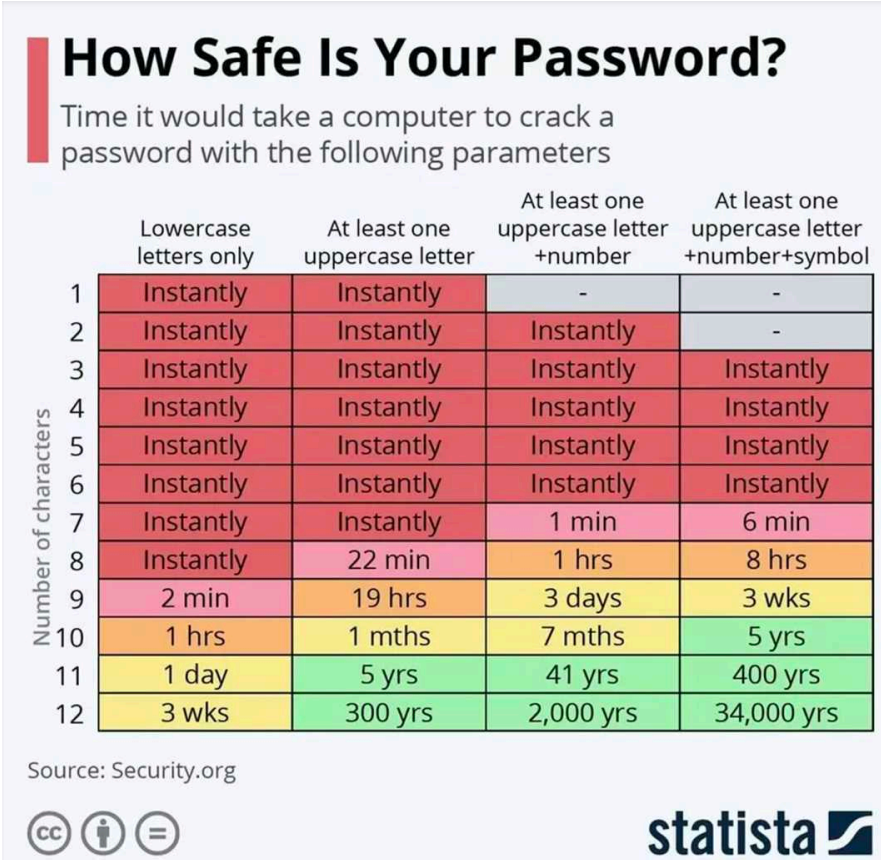Password security has become a crucial issue in an era where cyberattacks are on the rise. This content explains how long it takes to hack a password based on its length and complexity, using data published by Security.org and relayed by Statista.

How should this table be read?
This table shows the time required for a computer to try all possible combinations of a password, depending on:
- the number of characters
- the type of characters included
- character diversity
Les quatre colonnes correspondent à des niveaux de complexité différents :
1. Lowercase letters only
only lowercase letters (ex : abcdef)
2. At least one uppercase letter
lowercase letters + uppercase letters (ex : Abcdef)
3. At least one uppercase + number
lowercase letters + uppercase letters + numbers (ex : Abc123)
4. Uppercase + number + symbol
lowercase letters + uppercase letters + numbers + symbols (ex : Abc123!@#)
The more types of characters there are, the greater the number of combinations.
Analysis and interpretation of the table
Short passwords (1 to 7 characters)
No matter how complex they are, they are cracked instantly.
Machines test billions of combinations per second: a 7-character password is too short to resist.
From 8 characters: beginning of resistance
- 8 minuscules → Instantaneous
- 8 with capital letters → 22 minutes
- 8 with capital letters + numbers → 1 hour
- 8 complexes → 8 hours
An 8-character password is insufficient for most uses.
Between 9 and 10 characters: adequate strength
- 9 mixed characters → 3 days
- 10 complex characters → several months to several years
This is where passwords start to become difficult to crack.
11–12 characters: strong security
- 11 complex characters → 400 years
- 12 complex characters → 34,000 years
Recommended for all important accounts (email, banking, social media).
Why length is the most important factor
Each additional character multiplies the number of possible combinations.
Simplified example:
- 6 characters → ≈ 300 million combinations
- 12 characters → hundreds of trillions
Even with fast algorithms, a long password lasts much longer.
How can you create a truly secure password?
Here are some simple best practices:
✔ Use at least 12 characters
This is now the minimum recommended standard.
✔ Mix :
- lowercase letters
- uppercase letters
- numbers
- symbols
✔Avoid personal information
(first name, date of birth, city, etc.)
✔ Use a passphrase
Examples :
Blue-Tiger-Space-98!Sunset*robot*forest!42
✔ Never reuse the same password
If a website is hacked, all your accounts become vulnerable.
✔ Use a password manager
Such as Bitwarden, 1Password, or the one built into your browser.
Conclusion
According to data from Security.org (via Statista), password security depends mainly on:
- of its length
- of its complexity
- the number of character types used
Today, a secure password must contain at least 12 characters and include several types of characters to ensure lasting protection against brute force attacks.